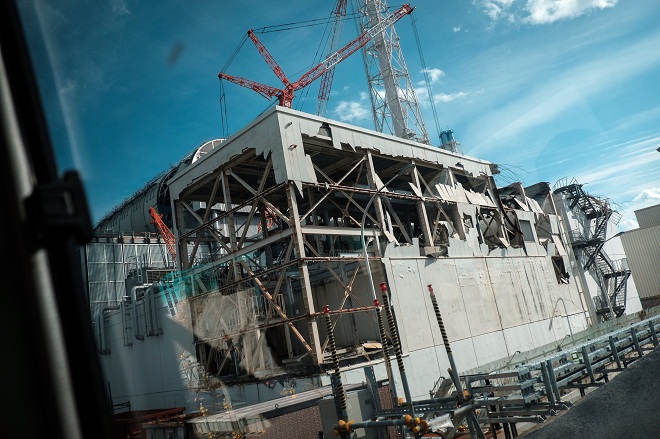Disaster areas facing shrinking number of volunteers
March 2, 2018
Kesennuma, Miyagi Pref.- The number of volunteers keeps falling in areas devastated by the March 2011 disaster although many of the affected communities and people still need help for reconstruction seven years after the catastrophe.
The reconstruction needs in disaster areas have changed over the period since the March 11 earthquake and tsunami that mainly struck northeastern Japan, and the subsequent accident at Tokyo Electric Power Company Holdings Inc.'s Fukushima No. 1 nuclear power plant.
The monthly number of volunteers who offered support through social welfare councils in Iwate, Miyagi and Fukushima, the three prefectures hit hardest by the quake and tsunami, peaked at 182,346 in May 2011. Since then, the number has continued to decline, coming to 1,751 in December 2017.
Initially, volunteers engaged in emergency assistance, such as removing disaster debris and serving meals to disaster victims. Their activities have now shifted to support for daily life and efforts to help maintain communities, including arranging meetings among residents at temporary housing.
Some organizations, including Kesennuma Fukko Kyokai in the Miyagi coastal city of Kesennuma, are facing shortages of operating funds.
The Kesennuma group conducts operations to search for people who remain unaccounted for after the tsunami and arranges volunteers.
After a state subsidy program for creating new jobs was terminated in fiscal 2016, the organization had no choice but to reduce the number of its staff employees from 10 to three.
Since fiscal 2017, the organization has relied on subsidies from the Miyagi prefectural government and donations. But it is in a dire financial condition.
"Although we want to organize projects to secure profits, we are short of human resources," Takahiro Chiba, 43, a senior official of the group, says.
Still, Chiba says, "Reconstruction is still halfway," pointing to a continued need for entities that serve as windows for people who come over to offer support.
"Ties we have developed with local people and volunteers through our activities are our capital," he says. "We hope to continue working to connect people."
In April last year, Mei Nishizaki, 25, from Tokyo, started working at Naraha Mirai, a group supporting the community building of the Fukushima town of Naraha, near the crippled Fukushima No. 1 nuclear plant.
Nishizaki, who was a member of a volunteer group when she was at university, moved to the town after declining an informal job offer from a major advertising agency.
"Now I'm a resident of the town, and I've started thinking about its future far ahead," she says. "I want to do meaningful things for the town."
Nobuyuki Kurita, 53 head of the Japan Civil Network for Disaster Relief in East Japan, a nationwide coalition of organizations supporting the reconstruction of areas hit by the March 2011 disaster, says "Many challenges remain to be overcome as it's only been seven years after the disaster."
"Residents in affected areas are working on such issues as depopulation and nuclear energy, which also face the whole country," he stresses, calling for efforts to promote discussions on these challenges. Jiji Press
Latest Videos
- THE UNTOLD STORY EXPERT INSIGHTS INTO THE UKRAINE
- NEGOTIATING A NEW ORDER US RUSSIA TALKS ON UKRAIN
- Ukraine: A Pawn in the Geopolitical Game? Will Trump Intervene?
- US VP VANCE CRITICIZES EUROPEAN DEMOCRACIES AT MUNICH SECURITY CONFERENCE
- UNCOVERING THE WEB OF DECEIT: CIA INFILTRATION OF THE MEDIA
- SHIFTING SANDS: TULSI GABBARD’S CONFIRMATION AND THE EVOLVING GLOBAL LANDSCAPE
- FAUCI SCANDAL: A THREAT TO GLOBAL HEALTH AND DEMOCRACY






